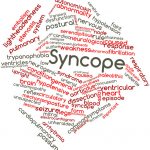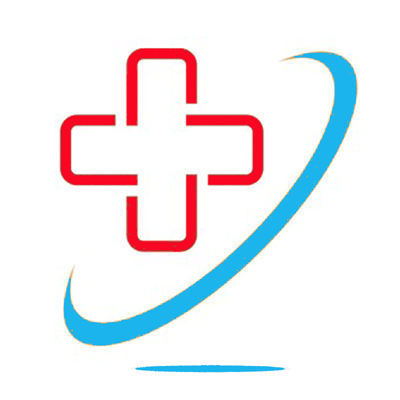Syncope needs better triage in ED – Oct 2021

Arian Zaboli joined our Academic Advisory Panel last week and has already given us an excellent challenge to work on. He is interested in getting safer triage for syncope patients and has results from a recently published observational study [1].
This study showed shortcomings in his hospital’s triage of atraumatic transient loss of consciousness TLOC. Syncope is a relatively common presentation in ED with 1-5% of ED visits and 1-3% hospital admissions. What Arian was interested in was the ability to apply at least some of the recommendations in the European Society for Cardiology’s (ESC) guidelines for diagnosis and management of syncope [2]. The crux of the problem is that triage systems need to discriminate ‘cardiac syncope’ which is more dangerous than other types. The Manchester Triage System (MTS – used in Arian’s study) did not classify enough high risk ‘cardiac syncope’ patients with Acuity 2 (orange). Too many were being classified as Acuity 3 (yellow). Some causes of syncope are genuinely low risk and need to be identified as such so that they fall into the lower two categories: Acuity 4 (green) and Acuity 5 (blue). Many of these were being over-triaged as Acuity (3).
Why MTS fails these patients
For those not familiar with the MTS system of nurse-led triage, it is basically a two step procedure: Choose a presentation; then check a list of ‘Discriminators’ working from the top (these are listed in order of descending seriousness) and select the first one which fits the patient. Each discriminator in the list has an associated acuity. MTS offers a choice of 53 presentations. Arian told us that “the most frequently used chart was Collapsed adult, followed by Unwell adult, Palpitations or Chest pain.”
When using the ‘Collapsed adult’ presentation with syncopal episodes likely to have resolved before arrival at the ED it is not surprising that many nurses selected History of unconsciousness. This particular discriminator sets the acuity to 3. Only if the nurse selected New abnormal pulse or Cardiac pain would MTS indicate cardiac syncope. If Unwell adult was used, the collection of discriminators is different: Altered conscious level (Orange) might have been chosen, although since TLOC resolves rapidly and completely in syncope, there is some ambiguity – does this mean ‘was recently altered’, or ‘is currently altered? Unwell adult only has New abnormal pulse and not Cardiac pain so there is less chance of picking up cardiac syncope with this ‘route’. The minority of patients where the last two presentations were chosen could enrich for some cardiac patients and explain Arian’s ROC results with some, albeit low (44.8%), sensitivity to cardiac syncope [1].
For those unfamiliar ROC analyses such a low sensitivity means a high false-negative rate and that over half the cases of risky cardiac syncope were missed. The specificity figure (88.1%) shows that those assigned the higher acuities (1-2) were more likely to be cardiac syncope patients.
Two classes of so-called reflex syncope*: vasovagal syncope (typically triggered by seeing blood, pain, emotional stress or prolonged standing) and situational syncope, triggered by urination, cough or defecation are lower risk syncopes in the ESC scheme [2]. However since most of these patients have History of unconsciousness they will be over-triaged to Acuity 3. Over-triage is a major cause of ED overcrowding and prevents low acuity patients being seen in ambulatory facilities.
* There are lots of synonyms which confuse the classification of syncope
Why the SortED process should do better
As we’ve previously reported [3] there are fundamental differences between the nurse-assisted SortED process and MTS triage. Firstly, SortED is not just a triage process, we perform a more comprehensive initial patient assessment akin to Doctor-led Rapid Assessment & Treatment (RAT) where investigations and treatments are identified at the front door, by nurses using a touch screen tablet.
In addition, how the algorithms in SortED set acuity is also fundamentally different from the way MTS works. Rather than using a single discriminator to set the acuity (a ‘trump card’) SortED sets the acuity in a different way. It builds a ‘hand of cards’ from four sources:1) Red cards (indicators of imminent life threats), 2) Observation cards which are based on significant abnormalities of readings for pulse, BP etc., 3) Pain cards from OUCHTM a new method for more objective pain scoring; and 4) Item cards, not just a single item as with an MTS discriminator, but all signs, symptoms and relevant history gathered from the patient.
The format and way nurses are helped to navigate the SortED system allows us to have a broader range of basic check lists and a series of more specific check lists than available in the MTS system. Great care in the phrasing of items reduces ambiguity and increases their ability to inform acuity selection.
We are now working with Arian to improve SortED’s ability to stratify all the different types of syncope into the appropriate high and low risk groups. We will let you know how that goes. Welcome aboard Arian. It’s a pleasure working with you.
Last words & Further reading
To be fair to MTS it was, in its day, a prodigious piece of work (originally released in 1997 in book form as a series of 52 flow charts [4]). However the format imposed constraints like a limit on the number of presentations. Also the system is reliant on the nurse’s recall of what is on that list of presentations (or in some computer implementations scanning down a list of 52 radio buttons!). Remembering lists under stressful conditions is not reliable. When thinking fast the recall heuristic operates – with ‘ease of recall’ having an impact on what springs to mind. Also nurses rather like Acuity 3 and we found evidence of nurses finding combinations to get there (e.g. Unwell adult + Recent moderate pain) [4].
For more information on Syncope try references [5-9 below] as well as those cited above.
[1] Zaboli A, Ausserhofer D, Sibilio S et al. Nurse triage accuracy in the evaluation of syncope according to European Society of Cardiology guidelines. Eur J Cardiovasc Nurs 2021.
https://pubmed.ncbi.nlm.nih.gov/34508636/
[2] Brignole M, Moya A, de Lange FJ et al. 2018 ESC Guidelines for the diagnosis and management of syncope. Eur Heart J 2018; 39(21):1883-1948.
https://pubmed.ncbi.nlm.nih.gov/29562304/
[3] Cleaver B, Bird J, Boyde L, Francis GE. Evaluation of a new rapid assessment and treatment (RAT) tablet app for Emergency Department nurses: Is earlier identification of investigations and treatments feasible? Int Emerg Nurs 2021 Mar; 55: 100875.
[4] Emergency Triage. Manchester Triage Group. Ed K Mackway-Jones. BMJ Publishing group; 1997.
[5] Del Rosso A, Ungar A, Maggi R et al. Clinical predictors of cardiac syncope at initial evaluation in patients referred urgently to a general hospital: the EGSYS score. Heart 2008; 94(12):1620-1626.
[6] Krol RB, Morady F, Flaker GC et al. Electrophysiologic testing in patients with unexplained syncope: clinical and noninvasive predictors of outcome. J Am Coll Cardiol 1987; 10(2):358-363.
[7] Kapoor WN, Peterson J, Wieand HS, Karpf M. Diagnostic and prognostic implications of recurrences in patients with syncope. Am J Med 1987; 83(4):700-708.
[8] Arthur W, Kaye GC. The pathophysiology of common causes of syncope. Postgrad Med J 2000; 76(902):750-753.
[9] Ganzeboom KS, Colman N, Reitsma JB, Shen WK, Wieling W. Prevalence and triggers of syncope in medical students. Am J Cardiol 2003; 91(8):1006-8, A8.
Gillie Francis – Oct 2021


